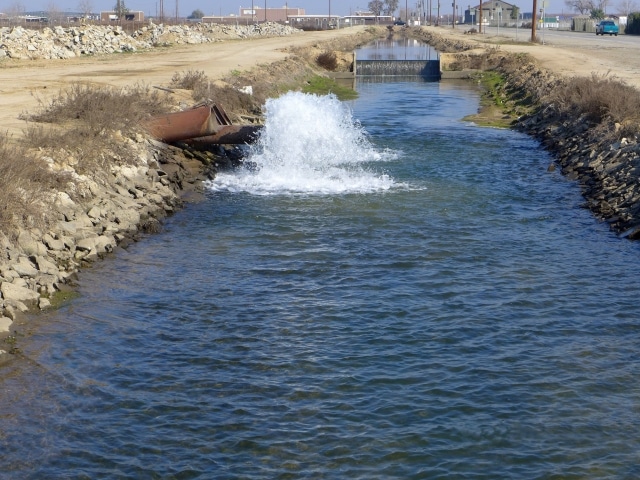“You can’t find what you don’t look for,” UC Berkeley researcher Seth B.C. Shonkoff recently told the LA Times, referring to the chemicals that state regulators don’t know to test for in the recycled wastewater the California oil industry sells for use on crops here in the top agricultural producing state in the US.
Chevron produces more than 10 times as much water as it does oil at its Kern River oil field in California’s Central Valley, for instance — 760,000 barrels of water a day versus 70,000 barrels of oil. Half of that water is treated and sold to the Cawelo Water District in Bakersfield, which mixes it with fresh water and sells it exclusively to farmers.
Nobody knows if that water contains chemicals from fracking or other extreme oil extraction techniques, because the companies aren’t required to test for them before selling the water. Nobody knows what those chemicals are, anyway, because companies aren’t required to make that information public.
And that’s just a fraction of the lucrative new market in recycled oil field water Chevron is pioneering as the climate-exacerbated drought gripping the American West show no signs of abating any time soon.
According to the LA Times, the company recycles 21 million gallons of produced water every day in California, selling it to farmers who use it on about 45,000 acres of cropland in Kern County, the nation’s “No. 2 crop county” since 2013.
Farmers rely on government regulators to guarantee that the recycled oil water they buy is safe, the Times reports, but given that state regulators don’t even know what those chemicals are, it can’t very well be testing for them. But that could all change soon.
The California legislature passed a law in 2013 that establishes a regulatory framework for fracking, acidization and other unconventional well stimulations techniques, including mandatory air quality and groundwater monitoring and public disclosure of all chemicals used. The full regulations go into effect July 1, 2015 (six months before the scientific study and environmental impact study ordered by the law will be completed, but that’s another story).
Last month, state water authorities announced that all recycled oil field water would have to be tested for every chemical copmanies report using in the extraction process, and set a June 15, 2015 deadline for companies to report the results of those tests. Currently, the only tests required by the state are for naturally occurring toxins.
Environmental advocacy group Water Defense has already done its own test of the water Chevron is selling to California farmers, however, and says, “Our findings are appalling: laboratory analysis of irrigation water in the Cawelo Water District found not only oil, but known toxins and potential carcinogens including methylene chloride. Are these chemicals in the food we eat? We need to be investigating our waterways for the full range of contaminants that are going into them.”
David Ansolabehere, general manager of the Cawelo Water District, criticized Water Defense’s methods, per the LA Times, but at the same time announced that his agency and Chevron would voluntarily contract a third party to conduct tests in accordance with the new requirements.
The biggest question that needs to be answered in all this, of course, is whether or not there has been significant contamination of our food supply. At present, it’s not clear whether or not oil contamination in water used on crops could ever actually make its way into an almond or cherry or any other California-grown produce you might ever consume. But it certainly will help when we know what to look for.
Of course, this is just one of many issues the oil industry has with water that needs to be resolved. California oil wells coughed up some 3.1 billion barrels of water along with 200 million barrels of oil in 2014, much of it too salty or chemical-laden to be treated in a cost-effective manner.
Some 831 million barrels of that wastewater was injected into disposal wells last year, even as evidence was coming to light that California regulators had improperly allowed as many as 2,500 injection wells to operate in groundwater aquifers that should have been protected under the federal Safe Drinking Water Act.
In response to the drought — and the fact that California has only one year of water left in its reservoirs — Governor Jerry Brown announced emergency urban water use restrictions earlier this year. Those restrictions were heavily criticized for not including the oil and agricultural industries.
State regulators, meanwhile, gave oil companies another two years to continue injecting wastewater into protected aquifers while they seek the proper exemptions from the Safe Drinking Water Act.
Image Credit: Richard Thornton / Shutterstock.com
Subscribe to our newsletter
Stay up to date with DeSmog news and alerts







